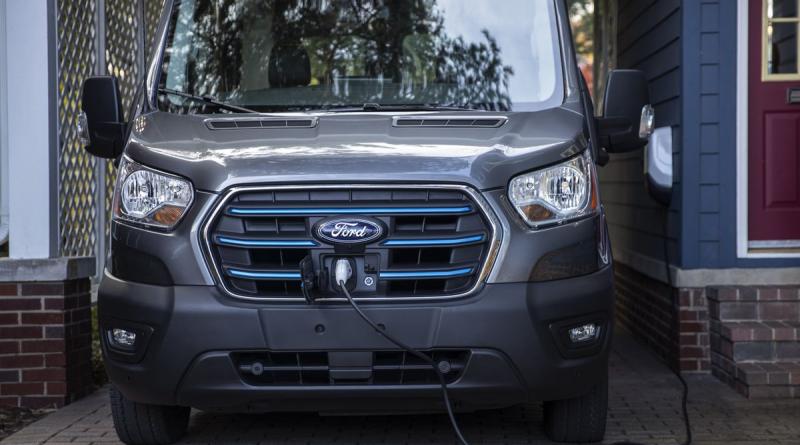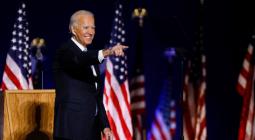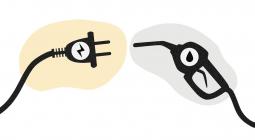Biden plans to replace government’s vehicle fleet with electric cars.

'The federal government owns an enormous fleet of vehicles, which we're going to replace with clean electric vehicles made right here in America, by American workers,' the president said.
Joe Biden signed an executive order on Monday to “Buy American”, which he says will include replacing hundreds of thousands of vehicles in the federal government fleet with US-made electric vehicles.
The order is intended to boost government purchasing from US manufacturers, as talks with Congress over a $1.9-trillion stimulus package that he considers essential to the nation’s recovery showed few signs of progress.
On Monday, President Biden said: "The federal government also owns an enormous fleet of vehicles, which we're going to replace with clean electric vehicles made right here in America, by American workers."
It will come as welcome news for American EV manufacturers including Tesla, Rivian, and Lordstown, along with traditional car makers like Ford and GM, which are plowing billions into the EV space.
There are some 650,000 vehicles in the fed’s fleet, according to a 2019 General Services Administration report. It breaks down into 245,000 civilian vehicles, 173,000 military vehicles, and 225,000 in the postal service.
President Biden’s election platform called for ramping-up the deployment of EVs, of which there are currently around 1 million on US roads.
One barrier to increased EV roll-out has been a lack of charging stations and government coordination.
President Biden has promised to work at the state and local level to deploy more than half a million new public charging outlets by the end of 2030.
He has also pledged to restore an EV tax credit to incentivise purchasing.
Monday’s order will likely take 45 days or longer to make its way through the federal bureaucracy, during which time wrangling with Congress could produce a new aid package. That would be a follow-up to the roughly $4 trillion previously approved to tackle the economic and medical fallout from the coronavirus.
The order was aimed at increasing factory jobs, which have slumped by 540,000 since the pandemic began in 2020.
“America can’t sit on the sidelines in the race for the future,” President Biden said before signing the order in the Eisenhower Executive Office Building. “We’re ready, despite all we’re facing.”
Biden’s order would modify the rules for the Buy American programme, making it harder for contractors to qualify for a waiver and sell foreign-made goods to federal agencies. It also changes rules so that more of a manufactured good’s components must originate from US factories. America-made goods would also be protected by an increase in the government’s threshold and price preferences, the difference in price over which the government can buy a foreign product.
It’s an order that channels Biden’s own blue-collar persona and his promise to use the government’s market power to support its industrial base, an initiative that former President Donald Trump also attempted with executive actions and import taxes.
“Thanks to past presidents granting a trade-pact waiver to Buy American, today billions in US tax dollars leak offshore every year because the goods and companies from 60 other countries are treated like they are American for government procurement purposes,” said Lori Wallach, director of Public Citizen’s Global Trade Watch and a critic of past trade agreements.
While Mr Trump also issued a series of executive actions and tariffs with the goal of boosting manufacturing, he didn’t attempt to rewrite the guidance for what constitutes a US-made component or tighten the process for granting exemptions to buy foreign goods, a key difference from Biden’s agenda, Biden’s administration said.
The order also has elements that apply to the separate Buy America programme that also apply to highways and bridges. It aims to open up government procurement contracts to new companies by scouting potential contractors.
The order would create a public website for companies that received waivers to sell foreign goods to the government, so that US manufacturers can have more information and be in a more competitive position.
Past presidents have promised to revitalise manufacturing as a source of job growth and achieved mixed results. The government helped save the automotive sector after the 2008 financial crisis, but the number of factory jobs has been steadily shrinking over the course of four decades.
The number of US manufacturing jobs peaked in 1979 at 19.5 million and now totals 12.3 million, according to the Labor Department.
The executive order is among a flurry of moves by President Biden during his first full week to publicly show he’s taking swift action to heal an ailing economy.
The president reiterated on Monday that he believes the country is in a precarious spot and and that relief is urgently needed, even as he dismissed the possibility of embracing a scaled-down bill to secure passage faster. Among the features of the stimulus plan are a national vaccination programme, aid to reopen schools, direct payments of $1,400 to individuals and financial relief for state and local governments.
“Time is of the essence,” Biden said. “I am reluctant to cherry-pick and take out one or two items here.”
AP contributed to his report
27 January 2021
INDEPENDENT





